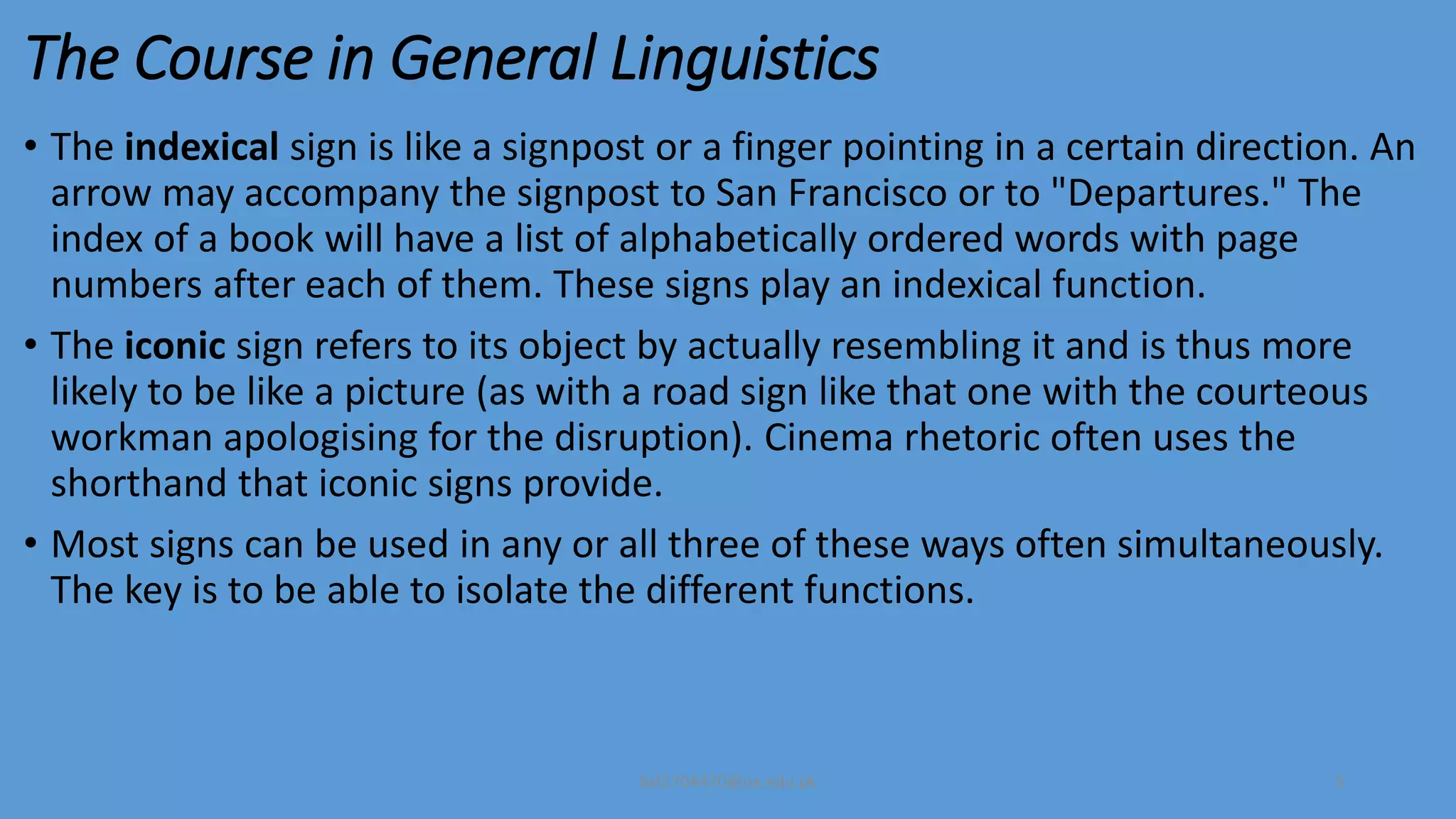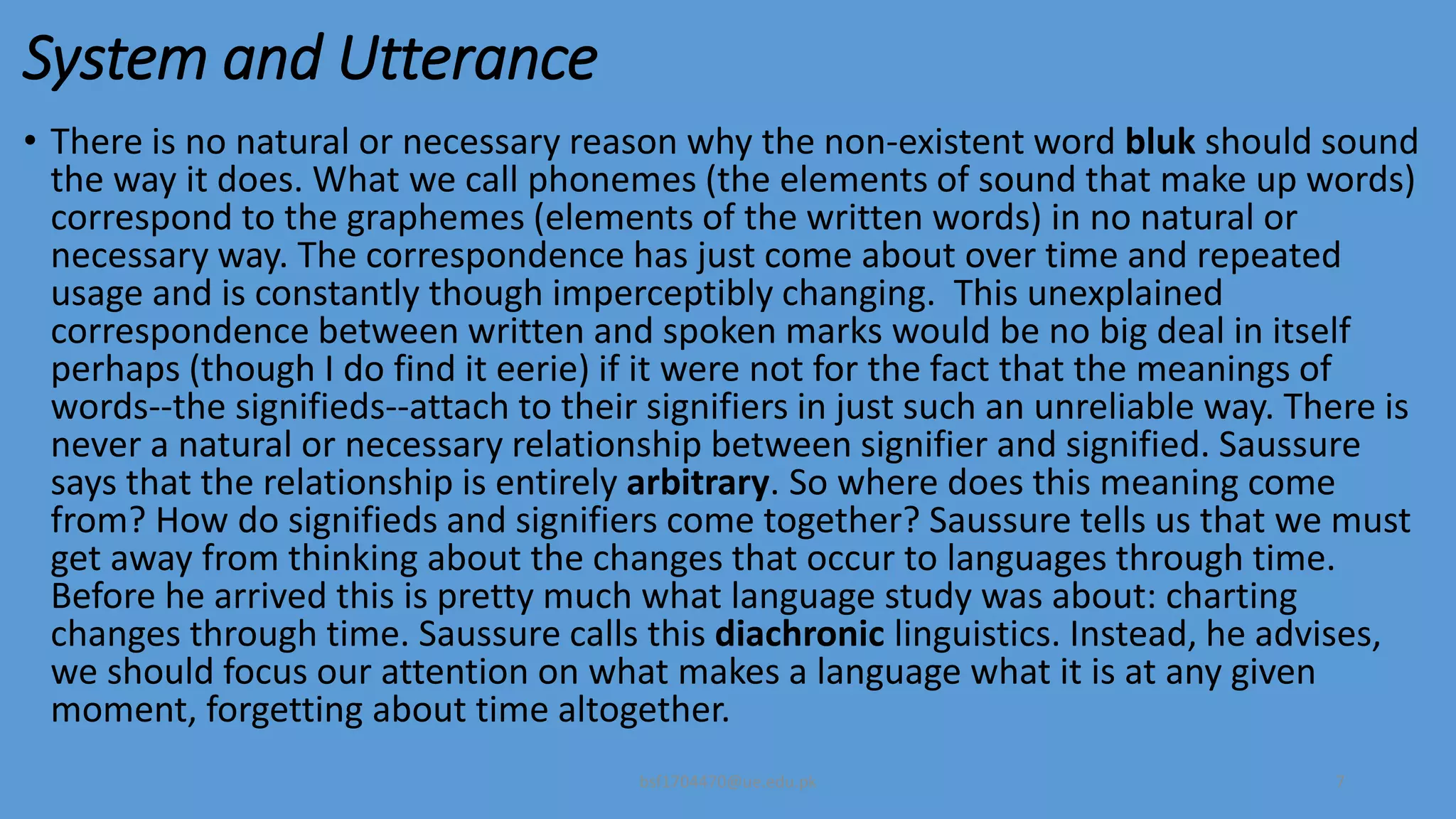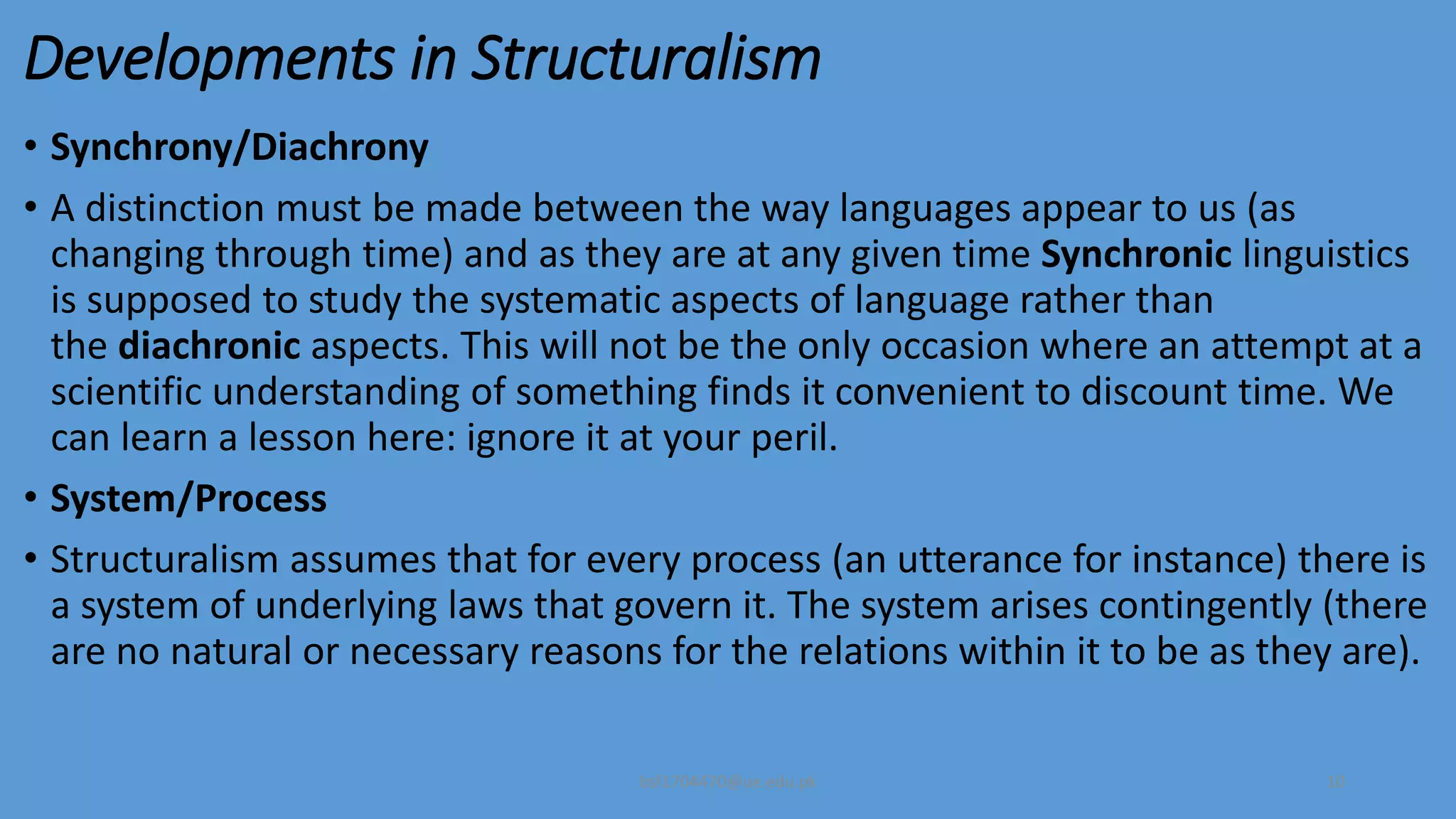Structuralism is a discourse that examines underlying structures of signification, focusing on how meaning is created through the relationship between signs, as first articulated by Ferdinand de Saussure. Saussure introduced the concepts of the signifier (the word) and signified (the concept) and emphasized that their relationship is arbitrary, necessitating a focus on synchronic linguistics to understand language systems at any given moment. The developments in structuralism show that language both reflects and is shaped by cultural and social experiences, leading to a deeper understanding of how meaning operates within these systems.









